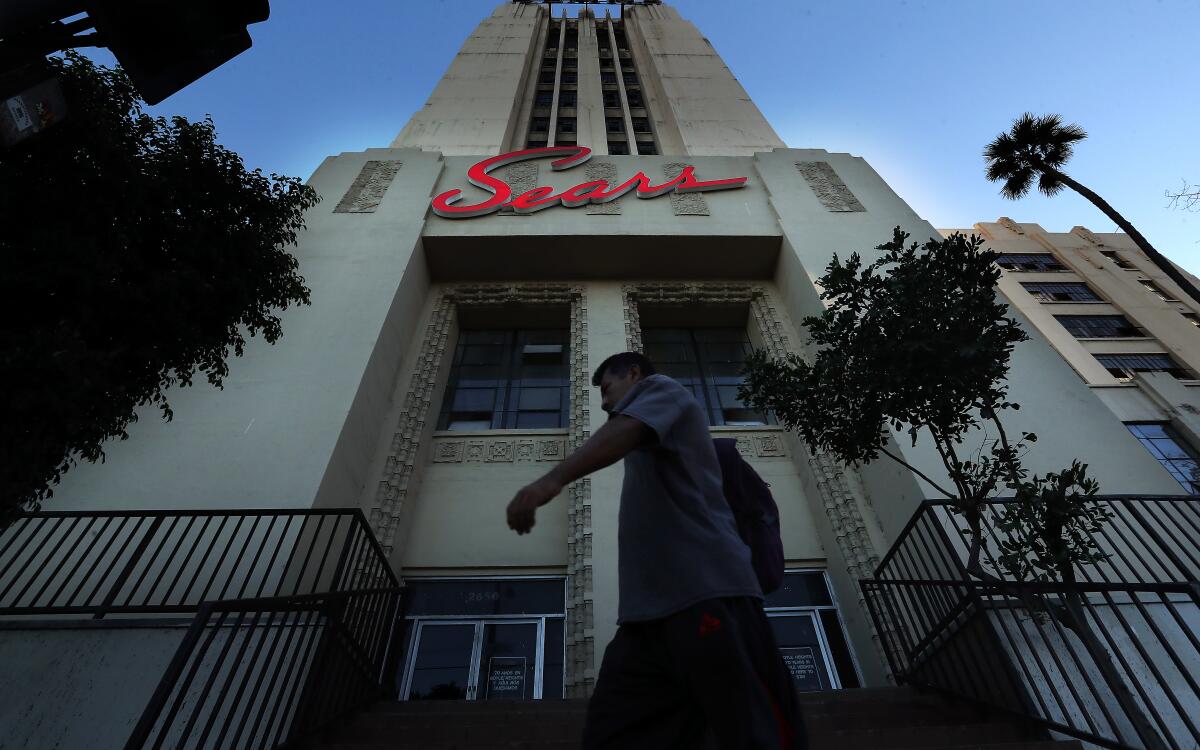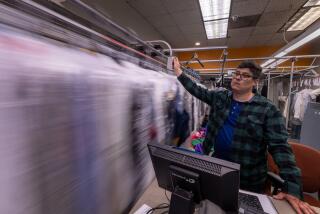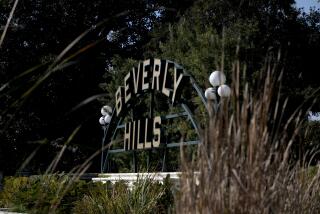Letters to the Editor: How the Boyle Heights Sears was a ticket to the middle class

To the editor: I cried reading about the impending closure of the Sears store in Boyle Heights. So much of my family’s history revolves around that Sears.
My family arrived in Los Angeles from Mexico in 1956. Our father was hired by Sears to unload merchandise from trucks for six weeks only. Those six weeks turned into a 30-year career, during which he was sent to help open the first Sears store in Europe.
My dad’s hard work, his becoming bilingual, and his being so simpático enabled him to provide us with a middle-class life. He was forever grateful for the opportunities Sears gave him — and yes, everything we bought was from Sears.
Carmen Escamilla, Laguna Beach
..
To the editor: Your story about the closing of Sears on Boyle Heights was touching but incomplete.
For decades Boyle Heights was the home of the second-largest Jewish immigrant population in Los Angeles. In 1928, the graduating class of Roosevelt High School was almost entirely Jewish. And where did this group shop? Sears.
As a second-generation American Jew, I grew up in Boyle Heights in the 1940s, and Sears was where we went to buy clothes for the kids, tools for my father and a washing machine for my mother. And when we were away, I always knew when we were close to home when I saw that big blue sign.
Let’s hope the building stays intact.
Richard Posell, Los Angeles
..
To the editor: The majestic and again-endangered Sears structure in Boyle Heights is the architectural twin of Sears Crosstown in my hometown of Memphis; both opened in 1927. The Memphis building also endured decades of deterioration before being restored as Crosstown Concourse, a mixed-use facility that now includes a high school.
Upon arrival by car in Los Angeles in 1970, you can imagine my surprise at seeing such a familiar and distinctive tower near downtown. A wrong turn onto Alameda Street in search of the Hollywood Freeway provided the view.
I’m ashamed to say that I never entered the Boyle Heights building.
Cay Sehnert, Eagle Rock
..
To the editor: Your article states, “Developer Izek Shomof, who purchased the property in 2013, plans to turn it into residential lofts, a trendy food hall and creative office spaces with a rooftop recreation area, but the COVID-19 pandemic has slowed progress.”
Evidently, this redevelopment may not be the cash cow that the Shomof had envisioned. Why doesn’t he sell or even donate this iconic property to the city?
Repurpose the landmark and turn it into a homeless shelter. Floors can be used to segregate people into safe groups with specific needs, such as single parents with kids or LGBTQ people. Offices can be transformed into on-site social services and childcare. Include a full commissary and kitchen that can provide nourishment, jobs, and job training.
Mike Hayashi, Ladera Heights
More to Read
A cure for the common opinion
Get thought-provoking perspectives with our weekly newsletter.
You may occasionally receive promotional content from the Los Angeles Times.










